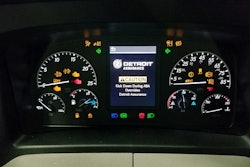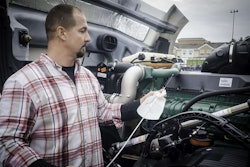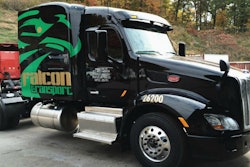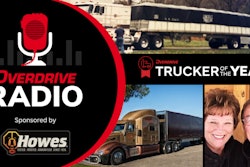The rapid industrywide adoption of the automated manual transmission has been accompanied by the related trend of downspeeding and lower axle ratios. The slower engine speeds have brought about significant savings in fuel costs and other efficiencies.
“Downspeeding is about reducing the amount of trips the piston takes up and down the engine, which reduces friction,” says John Moore, powertrain product marketing manager for Volvo Trucks North America. “This is actually where we’re saving the fuel.”
Volvo’s XE13 package that debuted in 2011 reduced rpm at cruise from about 1,370 to about 1,150. Newer iterations of downsped drivelines routinely cruise near 1,050 rpm.
Every reduction of 100 rpm is worth about 1.5 percent in reduced fuel consumption. So being able to maintain highway speeds at 1,150 rpm versus 1,370 constitutes a fuel savings of more than 3 percent.
A downsped driveline lets the engine operate at its most efficient rpm while also generating the minimal horsepower required to maintain a 65-mph cruise.
“There is a combination of factors for the engine fuel efficiency improvements,” says Carlos Pinotti, Meritor’s senior director of rear drivetrain engineering. He cites reduced engine friction due to lower piston speed and reduced heat transfer and flow losses due to lower gas velocities and improved thermodynamic efficiency.
“The slower that engine is turning, you’re not running the water pumps, accessory drives and all those things nearly as fast, not to mention fewer cycles per minute,” says Mike Garrison, Eaton application engineer.









